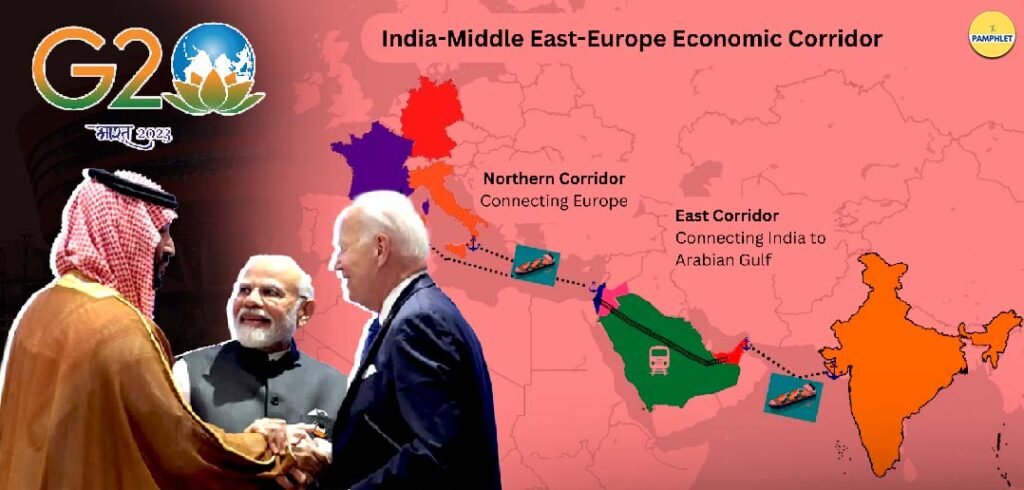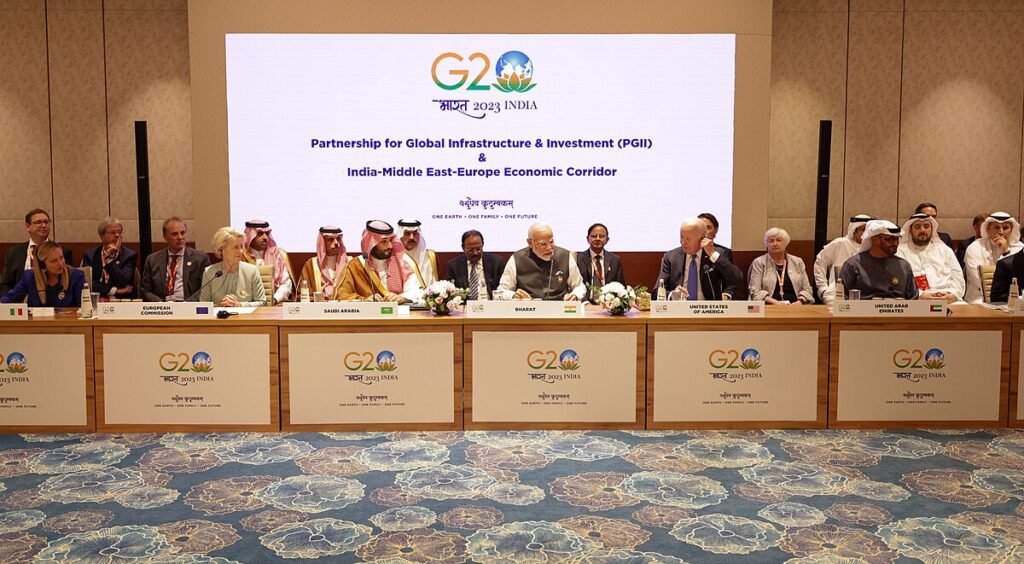The India-Middle East-Europe Economic Corridor is a planned economic corridor that aims to bolster economic development by fostering connectivity and economic integration between Asia, the Persian Gulf, and Europe.
The IMEC will comprise two separate corridors, the east corridor connecting India to the Gulf and the northern corridor connecting the Gulf to Europe. The corridor will provide a reliable and cost-effective cross-border ship-to-rail transit network to supplement existing maritime routes.
The India-middle east-europe Economic Corridor (IMEC) project was signed at the G20 summit in new Delhi. The project holds significant geopolitical and economic implications for India.
The IMEC project was launched by India, the U.S., UAE, EU, France, Italy, and Germany signed a memorandum of understanding to establish the India-middle Europe economic corridor, on similar lines to China’s bri during India’s G20 presidency.

Many details are being ironed out and multiple route options are being considered. The war in Gaza is one of the biggest hurdles for the project as of today.
The project forms part of the partnership for global infrastructure and investment (PGII). PGII is a values-driven, high-impact, and transparent infrastructure partnership to meet the enormous infrastructure needs of low and middle-income countries.
It draws inspiration from historic trade routes like the Silk Road, adapting the concept to modern geopolitical and economic landscapes.
The corridor seeks to leverage the strategic locations of India, the Middle East, and Europe to boost trade, economic growth, and political cooperation.
The proposed IMEC will consist of railroad, ship-to-rail networks (road and sea), and road transport routes (and networks) extending across two corridors:
The east corridor – connecting India to the gulf, and
The Northern Corridor – connecting the Gulf to Europe
The IMEC corridor will also include an electricity cable, a hydrogen pipeline, and a high-speed data cable.
The ports that could be connected on the west coast of India are Mundra (Gujarat), Kandla (Gujarat), and Jawaharlal Nehru Port Trust (Navi Mumbai).
In the Middle East, at least five ports have been shortlisted to be connected to the Indian ports, including Fujairah, jebel ali, and Abu Dhabi in the UAE and Dammam and Ras Al Khair ports in Saudi Arabia.
Then onwards to Haifa [ort in Israel, and Europe, Piraeus port in Greece, Messina in south Italy, and Marseille in France.
The onward rail route connectivity from five ports in UAE and Saudi Arabia stretching up to Haifa port in Israel will be a mix of already existing brownfield projects and fresh greenfield projects to connect missing links.

Transportation of products and services from India to the united arab emirates, Saudi Arabia, Jordan, Israel, and Europe and back would be made possible by IMEC
Overall, the corridor is anticipated to improve economic unity, create employment, cut greenhouse gas emissions, lower expenses, and promote efficiency (concerning transit).
A transformative integration of asia, Europe, and the Middle East is anticipated as a result.
From Mumbai, Indian goods shipped by this route could arrive on the European mainland in as less as 10 days – 40% faster than through the Suez Canal maritime route.
Israel-gulf relations: because of divergent views on the israel-palestine issue, Saudi Arabia and Israel do not have official relations.
